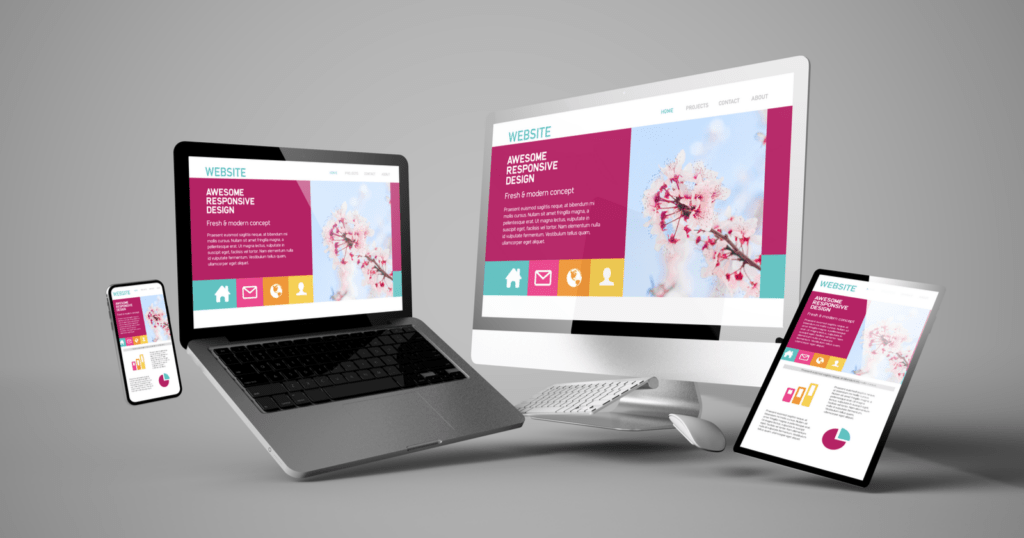Top Tips for Creating an Impactful Website Style That Converts
In today's digital landscape, the value of an impactful site style can not be overstated, especially when it comes to transforming visitors right into clients. To accomplish this, one have to think about a selection of factors, including comprehending the target audience, prioritizing individual experience, and enhancing for mobile systems. In addition, the critical use of engaging call-to-actions and a well-defined visual pecking order plays an essential duty in guiding individuals with their trip. As we discover these vital aspects, it ends up being apparent that the success of your website depends upon more than just aesthetic appeal; it needs a thoughtful approach to style and capability.

Understand Your Target Market
Comprehending your target market is essential to efficient website layout, as it lays the groundwork for developing an interesting individual experience. Identifying who your users are, including their demographics, preferences, and habits, enables developers to customize the internet site's content, layout, and capability to satisfy certain demands.
Conducting comprehensive market study is critical in this process. Studies, interviews, and analytics can provide important insights right into individual expectations and pain factors. By compiling this data, designers can create customer personas that stand for different sections of the target market, ensuring that style choices are notified and relevant.
In addition, recognizing the target audience assists in picking proper style aspects such as color pattern, typography, and imagery that reverberate with users. A website that speaks straight to its target market fosters a sense of link and count on, encouraging longer brows through and greater conversion prices.
Eventually, a user-centered method to web site design not only boosts individual satisfaction but also sustains organization purposes by driving engagement and commitment. By prioritizing the demands and preferences of the target market, a site can successfully serve its function and achieve preferred end results.
Prioritize Individual Experience
To boost the total efficiency of a site, prioritizing individual experience (UX) is important (Website Design). A properly designed UX makes certain that site visitors can navigate the website easily, find info swiftly, and engage with content meaningfully. This results in boosted customer contentment and higher conversion rates
Begin by executing instinctive navigation. Menus needs to be practically structured, permitting customers to situate key areas of the site with marginal effort. Uniformity in design components, such as color design and typefaces, cultivates experience, which is critical for preserving individual interaction.
Additionally, think about the filling speed of your web site. A delay of just a couple of seconds can lead to substantial drop-offs, as users are much less likely to wait for a slow-loading web page. Simplifying images and optimizing code can enhance performance and keep visitors.
By prioritizing individual experience, you not only develop a much more pleasurable atmosphere for visitors but likewise enhance your brand name's reputation. Inevitably, a focus on UX is a financial investment in the long-term success of your site.
Optimize for Mobile Gadgets
Optimizing for mobile phones is crucial in today's electronic landscape, where a boosting variety of users access websites with mobile phones and tablet computers. A mobile-friendly style not only boosts individual experience yet also plays a significant duty in improving online search engine rankings. To achieve this, it is important to embrace a receptive style that automatically adapts to numerous screen sizes and alignments.

Loading speed is one more vital variable; mobile customers are usually less client and anticipate quick access to info. By focusing on mobile optimization, you make certain that your site remains affordable and properly involves a broader audience.
Usage Engaging Call-to-Actions
A web site's performance usually pivots on its capacity to lead visitors toward wanted activities, making compelling call-to-actions (CTAs) crucial elements of layout. CTAs work as the crucial factors that guide individuals to engage with the site, whether that indicates purchasing, signing up for an e-newsletter, or downloading a resource.
To develop effective CTAs, quality is extremely important. Usage concise language that clearly connects the action you want the customer to take. Expressions such as "Start," "Subscribe Free," or "Shop Now" not just share urgency however likewise eliminate ambiguity. The positioning of CTAs is just as crucial; they must be strategically placed throughout the web page to guarantee they are quickly visible, especially in high-traffic locations.
Moreover, the layout of CTAs should stand out without being obtrusive. Utilize contrasting shades and clear typefaces to guarantee they catch attention. In addition, take into consideration making use of directional cues, such as arrowheads or photos, to assist users toward these switches. By concentrating on these aspects, companies can dramatically improve user interaction, driving conversions and eventually achieving their site's goals.
Focus on Visual Pecking Order
Effective site design depends heavily on a well-structured aesthetic power structure that overviews customers via content seamlessly. By organizing elements in a fashion that focuses on information, developers can enhance user experience and help with decision-making. This entails using dimension, color, contrast, and spacing strategically to accentuate one of the most vital components of a web page.
Using bigger typefaces for headings and subheadings develops a clear distinction in between various sections, permitting users to check material effortlessly. Furthermore, utilizing contrasting colors for buttons and calls-to-action can capture user Get the facts attention and encourage communication. Whitespace you could try these out is an additional essential component; it prevents mess and allows customers to concentrate on key messages without interruptions.
Images and graphics need to enhance the text while likewise adhering to the established power structure, strengthening the total message (Website Design). Uniformity in design elements, such as shade schemes and typography, additional reinforces the visual power structure, making navigation user-friendly

Final Thought
In verdict, effective internet site style requires a comprehensive understanding of the target audience, prioritization of customer experience, and mobile optimization. Ultimately, a well-executed internet site design offers as a vital part in driving individual activities and achieving organization purposes.